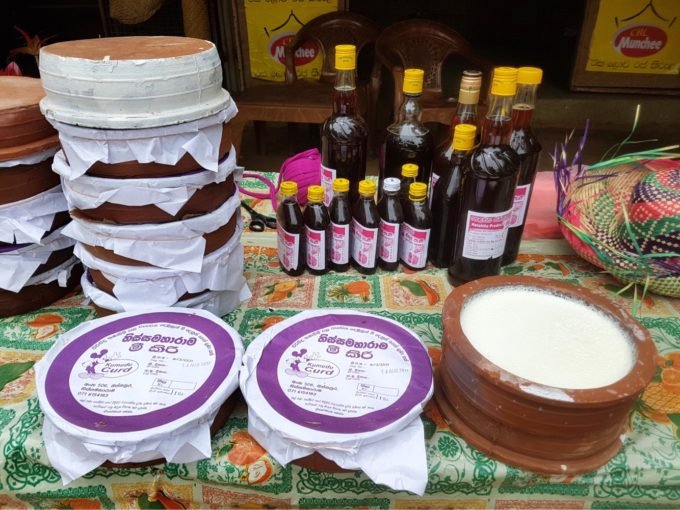
Breakfast Curd: It’s All About the Pot

Breakfast Curd: It’s All About the Pot
Curd in Sri Lanka
We are still bleary-eyed as our car makes its slow progress through the streets in Sri Lanka’s south. Our flight landed at an ungodly hour in the morning, and my husband and I are headed from Colombo’s international airport to Yala National Park.
The streets are empty, the dozens of villages dotted along the stretch slowly coming to life. We have been looking for breakfast, but nothing is open yet. Crossing the coastal resort towns of Tangalle and Hambantota, we reach Tissamarahama, when these shops first begin to appear. The first sign that catches my eye is Jayasuriya Curd Shop.
Wait, wait. What is a curd shop?
Our driver, Anand, turns to us in the backseat—taking his eyes off the road, as is his habit—to gush over the delights of the local curd. As he talks, we notice that both sides of the highway are lined with open stalls (with and without signboards) selling curd in shallow earthen pots.
Known as mee kiri, this is Sri Lankan curd, traditionally made from buffalo milk. The milk’s high fat content gives it an unmatched creaminess. The curd is made through natural fermentation, with tiny spoons of old curd added to milk that’s boiled for two hours to reduce the water content, then cooled to room temperature. It’s then sealed with paper and set aside for 12 hours (usually overnight). A part of the secret to this curd’s taste and texture lies in the coarse and porous nature of the baked clay pot (kiri hatti) in which it’s set, which provides natural insulation.
Stomachs rumbling, we pull over at a relatively uncrowded shop. Sanduni, the smiling teenager whose family has been in this trade for several years, welcomes us with a shy smile. She has even set up a hut with makeshift chairs and tables; a couple of local men seated on rickety plastic chairs pour a generous quantity of a viscous brown liquid on the yoghurt in their cups.
This Sri Lankan treacle, known as kithul peni, is made from the toddy (kithul) palm and is a perennial favourite among locals. Somewhat like maple syrup, it is smooth and thick, without the cloying sweetness of sugar or honey. Kithul-tapping is carried out by specific communities in Sri Lanka, with both men and women collecting the sap from trees and then boiling it to produce treacle (as well as jaggery, another natural sweetener).
As we dig into our kiri—we can’t bring ourselves to pour quite as much kithul as the locals do, especially because the curd has an innate sweetness—we chat with Sanduni while Anand acts as interpreter. Like other families in the village right behind this bustling highway, hers also makes and sells this yoghurt—over 250 pots a day.
Kiri with kithul is a most delicious and satisfying breakfast. We buy another pot for later in the day, the thought of kiri for dessert after lunch running through our heads.